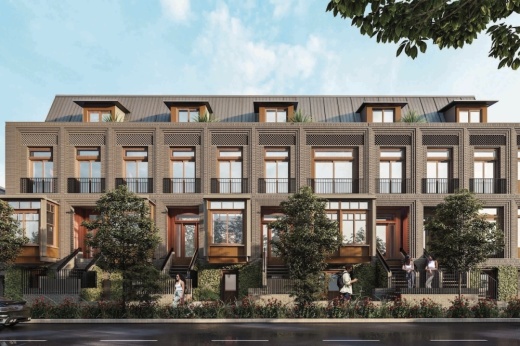This spring, a handful of projects moved forward to construct new multifamily options in this area.
“We created the railroad district so we can try to get some higher uses and better uses,” Mayor William D. Tate said.
The goal of the transit district overlay—a specific area that allows unique development—is to augment the historical value of the downtown area with small businesses and restaurants, which provide sales tax revenue and allow the city to maintain one of the lowest city property tax rates in the area, he said.
What you need to know
City officials created the transit district overlay in the downtown area over five years ago to enhance existing development. Director of Planning Services Erica Marohnic said the city used development standards more focused on creating a walkable area with its own character as opposed to standard zoning regulations, which stipulate land use.
To date, most of the development has been residential, she added, for multiple reasons, including the real estate market and the need to add residents before commercial development.
“You’ve got to have a certain amount of density or foot traffic to support those nonresidential uses,” Marohnic said. “Otherwise, it’s not going to be able to support itself.”
According to city data, four multifamily projects currently provide the necessary density within the transit overlay district, including the Grapevine Brownstones. The condominiums within the transit district were approved in 2022.
In 2024, Grapevine City Council has approved two projects within the overlay: a second phase of the Grapevine Brownstones in January, and the Nash and Berry Townhomes in April, which will add 35 new homes. The latter has already received interest from prospective buyers.
Richard Giberson, the developer of the Nash and Berry Townhomes, said he believes the zoning regulations make sense for adding a type of development not typically seen outside major metropolitan areas, such as Chicago or Dallas.
“Here, we can really provide those same amenities in Grapevine and still keep the small-town community feel that we're known for,” Giberson said.
Digging deeper
Kim Assaad, Realtor and team lead with The Assaad Group at Compass, said as Grapevine approaches build-out, home values in the area are significantly increasing as demand for the remaining space builds.
“Grapevine is a great place to live, located right in between Dallas and Fort Worth, and so close to DFW International Airport—that ... makes it really desirable and keeps our sales prices up,” she said.
Assaad commended Grapevine’s work on the build-out of the area. She said she believes approaching build-out makes the existing real estate even more attractive and valuable because of the fewer empty lots available. It also provides a boon to business owners.
“Business owners are just more confident about opening businesses in Grapevine, because it provides established residences who are the consumers in the area,” she said. “Plus a large amount of tourism helps all the businesses flourish.”
Some homes in the city also have a lower price point that makes it easier for younger families to move into the area, Assaad said. Some of the condominiums in the city can start in the $200,000 range, she said.
Affordability is also helped by the lower tax rate the city maintains, Tate said.
“It’s still important to me [and] to the city to use what land we have left for a way that will produce as much sales tax as possible,” Tate said.
Why it matters
Marohnic said part of the challenge with developing the remainder of Grapevine is most of the land is in smaller parcels.
Giberson said focusing on smaller development allows the city to grow in a more manageable way rather than face pressures to extend roads or utility connections.
“It’s more about a focus on quality and less on quantity,” Giberson said. “I think that’s actually a much healthier place to be as a city.”
Quote of note
"It’s going to take a lot of cooperation and understanding with our property owners and our citizens to maintain what we have," Tate said.
What to expect
By using the transit district overlay, city officials said they hope to enhance existing property since there are fewer options to build on open land.
“You want to enhance or add on rather than tear down and rebuild,” Marohnic said.
She added that remaining land is more conducive to reuse, such as the Nash and Berry Townhomes, not large multifamily complexes that typically require large, open parcels.
“In some instances, there might be other impediments on the property,” Marohnic said, describing some properties in flood plains that are harder to develop.
Assaad also pointed out that buyers are willing to purchase existing homes, and remodel and update, just to be in the desirable area Grapevine is located in.
Tate said officials will have to continue fighting to preserve the character of Grapevine because of increasing demand to build apartments as home values increase and more people are forced to consider moving into apartments.






